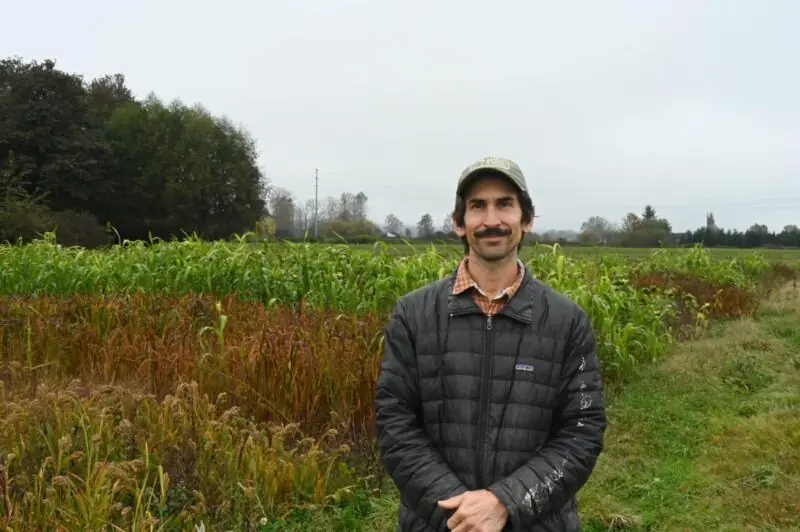Resisting the Roadless Rule Rollback – Center for Biological Diversity

Report on the Proposed Rescission of the Roadless Area Conservation Rule and its Implications for Sustainable Development Goals
Executive Summary
A proposal by the U.S. Department of Agriculture to rescind the 2001 Roadless Area Conservation Rule threatens to open approximately 45 million acres of national forests across 37 states to development, including road construction and logging. This policy change would have significant adverse impacts on the United States’ progress toward several key Sustainable Development Goals (SDGs), particularly SDG 15 (Life on Land), SDG 6 (Clean Water and Sanitation), and SDG 13 (Climate Action). The rule has been a cornerstone of conservation, protecting biodiversity, water sources, and carbon sinks. Its removal would prioritize short-term resource extraction over long-term environmental and social sustainability.
Analysis of Impacts on Sustainable Development Goals
SDG 15: Life on Land
The proposed action directly contravenes the objectives of SDG 15, which calls for the protection, restoration, and sustainable use of terrestrial ecosystems and the halting of biodiversity loss.
- Threat to Biodiversity (Target 15.5): The Roadless Rule currently protects critical habitats for over 500 species protected under the Endangered Species Act. Development in these areas would lead to habitat fragmentation and destruction, increasing the risk of extinction for vulnerable wildlife.
- Species at Risk Include:
- American wolverines
- Gray wolves
- Canada lynx
- Grizzly bears
- Northern spotted owls
- Quino checkerspot butterflies
- Degradation of Forest Ecosystems (Target 15.2): Allowing road construction and logging in previously protected, unfragmented forests undermines the principles of sustainable forest management. These roadless areas are vital strongholds of biodiversity where natural ecological processes can continue unimpeded.
SDG 6: Clean Water and Sanitation
The protection of water-related ecosystems is a central component of SDG 6. National forests serve as the largest single source of municipal water in the United States, and the Roadless Rule is critical to maintaining water quality.
- Protection of Water Sources (Target 6.6): National forests are the headwaters for rivers that supply drinking water to over 60 million Americans. The Roadless Rule protects these water sources by preventing road construction, which is a major cause of erosion and sediment pollution in streams and rivers.
- Risk of Pollution: Rescinding the rule would increase the likelihood of water contamination, jeopardizing clean drinking water supplies and negatively impacting aquatic ecosystems.
SDG 13: Climate Action
The proposal undermines efforts to combat climate change by threatening significant natural carbon sinks and increasing the risk of climate-related disasters like wildfires.
- Loss of Carbon Sinks (Target 13.2): Many roadless areas contain mature and old-growth forests, which are crucial carbon sinks that absorb and store vast amounts of atmospheric carbon. Logging these forests would release this stored carbon, contributing to climate change.
- Increased Wildfire Risk: Research indicates that roads significantly increase the risk of human-caused wildfires. More than 90% of U.S. wildfires occur within half a mile of a road. Expanding the road network into remote forests would heighten the frequency and severity of wildfires, further impacting climate goals and community safety.
Economic and Governance Implications
SDG 12: Responsible Consumption and Production & SDG 8: Decent Work and Economic Growth
The rationale for rescinding the rule is to expand domestic timber production. However, this approach conflicts with sustainable economic principles and responsible resource management.
- Unsustainable Economic Burden: The U.S. Forest Service already manages a 380,000-mile road system with a maintenance backlog estimated in the billions of dollars. Constructing new roads in backcountry forests would impose additional, unsustainable costs on taxpayers.
- Conflict with Sustainable Production (Target 12.2): The proposal favors industrial resource extraction over the long-term ecological services provided by intact forests, such as clean water, recreation, and climate regulation, which also have significant economic value.
SDG 16: Peace, Justice and Strong Institutions
The Roadless Rule is a widely supported public policy that was established through an extensive public process, reflecting strong environmental governance.
- Undermining Public Institutions: The rule was enacted after receiving 1.6 million public comments, making it one of the most popular conservation policies in U.S. history. An administrative attempt to roll it back without a similar public mandate weakens trust in governmental institutions and stable, long-term environmental policy.
Conclusion
The rescission of the Roadless Area Conservation Rule would represent a significant setback for environmental protection and sustainable development in the United States. The policy change would directly threaten the achievement of SDG 15 (Life on Land), SDG 6 (Clean Water and Sanitation), and SDG 13 (Climate Action) by degrading vital ecosystems, jeopardizing water supplies, and diminishing natural climate solutions. Furthermore, it raises concerns regarding sustainable economic management and the stability of environmental governance. Maintaining the Roadless Rule is essential for aligning national policy with global sustainability commitments.
Analysis of Sustainable Development Goals (SDGs) in the Article
1. Which SDGs are addressed or connected to the issues highlighted in the article?
-
SDG 15: Life on Land
This is the most central SDG addressed. The article focuses on the threat to 45 million acres of national forests and the biodiversity within them. It explicitly states that repealing the Roadless Rule would “kill imperiled species,” harm the habitats of “more than 500 protected species” (including grizzly bears and northern spotted owls), and destroy areas that are the “beating heart of biodiversity.”
-
SDG 6: Clean Water and Sanitation
The article directly connects the protection of roadless forests to water quality. It states that these areas “protect America’s drinking water” for “more than 60 million people” and that road construction and logging would “foul precious water” and “pollute streams and rivers with sediment.”
-
SDG 13: Climate Action
The article highlights the role of the protected forests in climate change mitigation. It describes them as “important carbon sinks” and notes that “mature and old-growth forest, which absorb and store vast amounts of carbon that helps mitigate climate change,” are at risk.
-
SDG 11: Sustainable Cities and Communities
The article connects the proposed development to an increased risk of natural disasters, specifically wildfires. It cites research showing that “wildfires were four times as likely in areas with roads” and that “more than 90 percent of all U.S. wildfires happened within half a mile of a road.” Protecting these forests is also framed as safeguarding America’s natural heritage, which is valuable for recreation.
-
SDG 16: Peace, Justice and Strong Institutions
The article discusses the governance and policy-making process. It refers to the “Roadless Area Conservation Rule” as a landmark policy enacted with significant public support (“1.6 million Americans called for protection”). The current attempt to undo this rule via an “administrative rulemaking” and “executive order” for the benefit of the “timber industry” raises questions about responsive and accountable institutions.
2. What specific targets under those SDGs can be identified based on the article’s content?
-
Target 15.1: Ensure the conservation and sustainable use of terrestrial and inland freshwater ecosystems, particularly forests.
The article is centered on the conservation of 45 million acres of national forests, which are terrestrial ecosystems whose protection is being challenged.
-
Target 15.5: Take urgent action to reduce the degradation of natural habitats, halt biodiversity loss, and protect threatened species.
The proposed policy change is described as an action that would “fragment and destroy forest habitat” and “push too many species toward the brink of extinction,” directly contradicting this target.
-
Target 6.6: Protect and restore water-related ecosystems, including forests and rivers.
The article emphasizes that the Roadless Rule protects headwaters and prevents pollution in streams and rivers, which are vital water-related ecosystems.
-
Target 13.2: Integrate climate change measures into national policies and planning.
The Roadless Rule is presented as an existing national policy that serves as a climate change mitigation measure by protecting carbon sinks. The proposal to rescind it represents a failure to integrate climate considerations into national planning.
-
Target 11.5: Significantly reduce the number of people affected by disasters, including wildfires.
By arguing that roads increase the risk of human-caused wildfires, the article implies that protecting roadless areas is a measure to prevent disasters that threaten communities and ecosystems.
3. Are there any indicators mentioned or implied in the article that can be used to measure progress towards the identified targets?
-
Area of protected forest land:
The article explicitly mentions “nearly 45 million acres of wild, unfragmented national forests” protected by the rule. This figure serves as a direct indicator for Target 15.1.
-
Number of threatened species protected:
The text states that the rule protects habitat for “more than 500 protected species.” The status and population of these species (e.g., American wolverines, grizzly bears) can be used as an indicator for Target 15.5.
-
Population dependent on water from protected areas:
The article specifies that the national forests supply water to “more than 60 million people.” This number is an indicator of the human impact related to Target 6.6.
-
Frequency of human-caused wildfires:
The article provides statistics that can be used as indicators for Target 11.5, such as “wildfires were four times as likely in areas with roads” and “more than 90 percent of all U.S. wildfires happened within half a mile of a road.”
-
Carbon storage capacity:
While not quantified, the article’s reference to forests that “absorb and store vast amounts of carbon” implies that the amount of carbon sequestered in these 45 million acres is a key indicator for Target 13.2.
4. Summary Table of SDGs, Targets, and Indicators
| SDGs | Targets | Indicators |
|---|---|---|
| SDG 15: Life on Land | 15.1: Conserve and sustainably use terrestrial ecosystems. 15.5: Halt biodiversity loss and protect threatened species. |
– Area of protected forest (45 million acres). – Number of protected species at risk (over 500). |
| SDG 6: Clean Water and Sanitation | 6.6: Protect and restore water-related ecosystems. | – Number of people relying on water from protected forests (over 60 million). – Quality of water in streams and rivers originating from these areas. |
| SDG 13: Climate Action | 13.2: Integrate climate change measures into national policies. | – Amount of carbon stored in protected old-growth forests. – Existence of national conservation policies (the Roadless Rule). |
| SDG 11: Sustainable Cities and Communities | 11.5: Reduce the impact of disasters like wildfires. | – Frequency of wildfires in areas with and without roads (four times as likely with roads). – Proximity of wildfires to roads (90% within half a mile). |
| SDG 16: Peace, Justice and Strong Institutions | 16.7: Ensure responsive and representative decision-making. | – Level of public participation in policy-making (1.6 million people in original hearings). |
Source: biologicaldiversity.org

What is Your Reaction?
 Like
0
Like
0
 Dislike
0
Dislike
0
 Love
0
Love
0
 Funny
0
Funny
0
 Angry
0
Angry
0
 Sad
0
Sad
0
 Wow
0
Wow
0















































/environment-climate-change-and-health-(ech)/water-sanitation-hygiene-and-health-(wsh)/landfill-tuvalu-36092.tmb-1200v.jpg?sfvrsn=5c21fe40_1#)


.jpg.webp?itok=0ZsAnae9#)
























